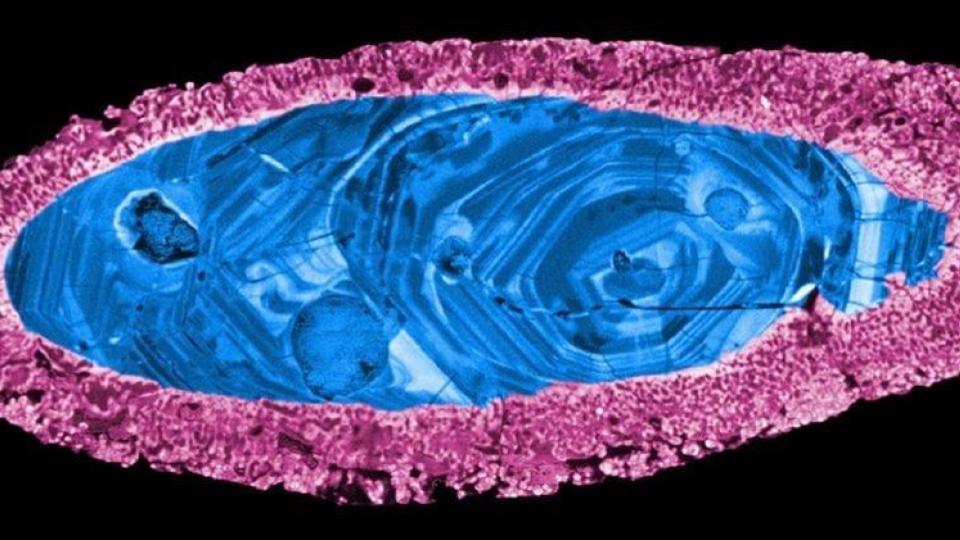
One of the recurring themes of the year has been that there are some places on Earth are older than others. Canada – that Canadian shield is super old. Western Australian – also old. Just how old these different places might be is always challenging to nail down, but one team of researchers think they have been able to determine the precise and ancient age of Yarrabubba crater. This ancient impact site has been worn away across the eons, with its crater rim being eroded into the landscape. It was the presence of shocked quartz, shatter cones, and tektites that initially marked that this weirdly depressed landscape with its central outcrop – Barlangi Rock – as a crater.
Now, these same minerals have been used to measure the crater’s age. New research from an international team of NASA and Curtin University scientists has determined the crater is 2 billion, 229 million years old. This age was determined by studying minerals that were recrystallized by the asteroid strike. Specifically, they looked at zircon and monazite. These minerals contain inclusions of Uranium, and Lead that is the result of the radioactive decay of what was Uranium. These inclusions can be used to precisely determine the age of the shocked materials.
This result alone is pretty cool. The paper goes on to discuss how they can use an aeromagnetic anomaly to measure the impact as having a roughly 70 km diameter. They also identify other cool geologic details, but while shock and destruction is always awesome, the detail that is getting the most attention in this paper is how this asteroid may have radically changed our planet’s climate.
This impact is aligned in time with the end of an ice age that created low-latitude glaciers, including glaciers in South Africa. This Rhyacian period glaciation may have been global in nature, but that is less well understood. While it could be a coincidence that the Palaeoproterozoic glaciers melted away in the same couple million year window as the impact, the research team postulates that the impact triggered a global warming event that melted the glaciers. According to the team’s Nature paper, the team examined “scenarios where the Yarrabubba impact site could have been covered by a continental ice sheet at the time of impact. Numerical models … demonstrate that the formation of a 70-km-diameter impact crater into a granitic target with an overlying ice sheet ranging from 2 to 5 km in thickness results in the almost instantaneous vaporization of 95–240 km^3 of ice and up to 5400 km^3 total melting. The vaporized ice corresponds to between 9 × 10^13 and 2 × 10^14 kg of water vapor being jetted into the upper atmosphere within moments of the impact.” To turn that scientific notation into words, this is 90 trillion to two-hundred trillion kilograms of water being put into the atmosphere where it can acted like a greenhouse gas, warmed our world, and melted away the ice that covered at least the southern continents and perhaps the entire planet.
Error bars are tricky. Both these events occurred in the same several million year long window, and they may have occurred one directly after the other as the impact triggered the melt. The data allows that. It could also be that a couple million years separated these events and it is all just a coincidence. We may never know, but for now, this is a cool piece of science that may explain how one glacial age may have ended.
To see the press release, head to:
New research finds Earth’s oldest asteroid strike linked to ‘big thaw’ (Curtin University)




 Join the Crew!
Join the Crew!
 Escape Velocity Space News
Escape Velocity Space News
0 Comments